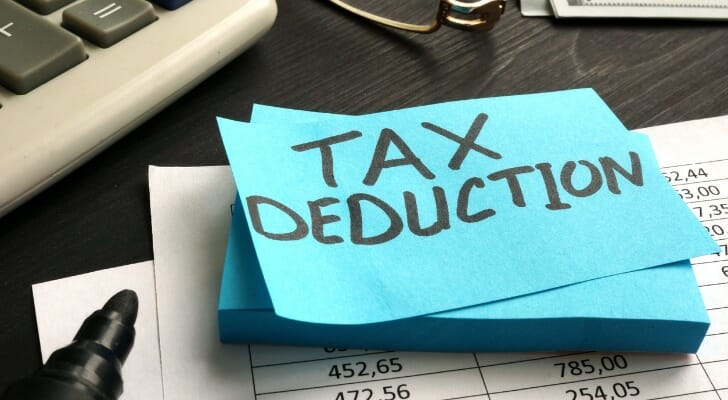Taxes can have a major impact on your investment portfolio and overall financial plan. While many people only think about taxes when they’re filing their tax returns in the spring, tax planning should be a year-round endeavor. That’s because all financial and investment decisions you make have a tax impact – even if that impact won’t be felt right away. However, there are steps you can take to reduce your tax liability as you build out your financial plan.
A financial advisor with tax planning expertise can be a valuable resource as you pursue your financial goals. Connect with a fiduciary advisor today.
What Is Tax Planning?
Tax planning is the process of organizing your finances to minimize your tax liability while staying compliant with federal, state and local tax laws. It involves analyzing income, investments, deductions and expenses throughout the year to take advantage of available credits and tax-efficient strategies. The goal is not just to reduce taxes owed but to align your financial decisions with your broader goals, whether that’s building wealth, funding retirement or growing a business.
Effective tax planning goes beyond filing an annual return. It’s a proactive, year-round effort that considers how every financial move, from investment choices to charitable giving, affects your taxable income. For individuals, it might mean contributing to tax-advantaged retirement accounts or timing the sale of assets for optimal capital gains treatment. For business owners, it can include selecting the right business structure, managing depreciation or leveraging deductions for operating expenses.
Ultimately, tax planning is about keeping more of what you earn while positioning yourself for long-term financial success. Working with a financial advisor or tax professional can help ensure your strategy fits your unique circumstances and adapts to changing tax laws, helping you make smarter, more efficient financial decisions year after year.
The Role of Timing in Tax Planning
Timing is a key component of tax planning. Knowing when to recognize income or deductions can make a significant difference in the amount of taxes owed. For example, deferring income to a later tax year or accelerating deductions into the current year could reduce your immediate tax burden. It requires careful analysis of your income, expenses, investments and other financial activities.
Tax-Loss Harvesting
If you look at the investments in your taxable accounts at the end of the year, and see which investments are winners and losers, you might want to decide whether to sell these winning or losing investments. Selling those investments can affect your tax situation for the year. This is known as tax-loss harvesting.
Capital losses can offset capital gains, lowering or eliminating your tax liability. You can also use up to $3,000 in short-term losses to offset up to $3,000 of regular income each year. You can even carry forward unused short-term losses for future use. Figure out which of the investments in your portfolio you want to sell now or later, depending on how it will affect your present and future tax plans.
Bunching Charitable Contributions
As noted above, charitable contributions can also lower your tax bill. If your charitable giving and other itemized deductions don’t add up to exceed the standard deduction, you might want to consider bunching deductions. That essentially means you donate several years’ worth of charitable gifts in a single year, which ends up pushing you above the threshold so you benefit from itemizing your deductions. A tax attorney or another financial professional can help you figure out how to time your giving and how to plan for that.
Leverage Long-Term Capital Gains Tax Rates
If you invest in the stock market, planning out the amount of time that you hold certain investments can be incredibly important. Earnings made from investing are called capital gains, and whether they fall into the short-term or long-term buckets can have a major effect on your tax bill. In fact, if you can plan ahead to reach long-term status with your investments before selling them, you’ll receive much more favorable treatment from the IRS.
Short-term capital gains are what they sound like: earnings that come from an investment you sold within one year of its purchase. In turn, you can reach long-term status by holding the investment for at least a full year prior to its sale. The latter is looked at more favorably by the federal government.
When it comes to capital gains tax rates, short-term rates are the exact same as income tax rates, which vary from 10% all the way up to a hefty 37%. Long-term capital gains rates are much lower: 0%, 15% or 20% depending on your income. Having a strong planning strategy in place for reaching this long-term status can offer you access to these much lower rates.
Planning Ahead for Your Taxes
It’s a lot easier to have good timing when you plan. An advisor can help you figure out the right timing, but they can also help you stay aware of how your personal financial choices affect your tax plan. In addition, they can help you figure out the tax considerations you need to take into account for your financial and investment decisions ahead of time. And if you’re working with them year round, they can let you know when emerging tax issues call for changes in your financial plans.
Remember to document your financial decisions throughout the year. In other words, save your receipts and make notes of individual decisions. When you file your tax return, you get to choose between the standard or itemized tax deduction to determine your taxable income. The standard deduction is a dollar amount that the government sets. You can claim the standard deduction without any additional accounting or evidence.
However, you may find that your actual deductible expenditures end up being more money than the standard deduction amount. If that’s true, you’ll be able to pay less in taxes if you use the itemized deduction method. To claim an itemized deduction, you’ll have to use other receipts and documents to prove you spent the amount of money you claim on tax-deductible expenditures.
Come up with an organizational system that works for you and begin saving receipts that can document potentially tax-deductible expenditures. You’ll want to save your receipts even if you claim the standard deduction. That way, you’ll be able to make an informed choice about which method will save you more money when you file your taxes.
Contribute to Tax-Advantaged Accounts

Contributing to tax-advantage accounts is another way to optimize your tax strategy and potentially lower your tax liability each year. Here’s a look at these accounts and how they can be used within your tax plan.
Tax-Advantaged Retirement Accounts
You can reduce your taxable income by contributing to a retirement account, like a 401(k) or IRA. If you’re under the age of 50, you can contribute up to $23,000 to a 401(k) in 2024. For an IRA, those under 50 can contribute up to $7,000 in 2024.
Starting at age 50, you can make “catch-up contributions” to IRAs, 401(k)s and similar accounts. For IRA account holders, that means an extra $1,000 a year to contribute, while 401(k) account holders can contribute up to $7,500 more in 2024.
The money you contribute and the earnings you make are tax-deferred until you make withdrawals. That means you can deduct the amount you contribute to your IRA or 401(k) from your taxable income. You don’t pay any tax on that money until you withdraw it. However, if you are covered by a retirement plan like a 401(k), you may not be permitted to deduct your IRA contributions from your taxable income.
Remember to look into a Roth IRA or a Roth 401(k) plan, as well. Because the money put into a Roth account has already been taxed, your contributions and investment gains are not taxed when you take qualified distributions later on.
529 College Savings Accounts
If you have a child or are helping save for a family member’s college education, you should consider contributing to a 529 college savings account before the end of the year. Although these contributions are not deductible for federal taxes, over 30 states and the District of Columbia offer a full or partial deduction or credit for contributions to a 529 plan.
ABLE Accounts
An estimated 20% of children in the U.S. have special health care needs, according to the Annie E. Casey Foundation. People with special needs and their families can contribute up to $18,000 in 2024to an ABLE account. The limit is even higher if the person with the disability is working and does not participate in a workplace 401(k) or other retirement program.
Money is put in after taxes are paid, and earnings growth and qualified withdrawals are tax free. In addition, states allow you to deduct your contribution to this savings program. In Massachusetts and other states, there is no minimum to open the account and no annual maintenance fee.
Take Advantage of Tax Credits

Tax credits are one of the most powerful tools in tax planning because they reduce your tax bill dollar for dollar, rather than simply lowering your taxable income. Understanding which credits you qualify for can make a significant difference in your overall tax liability.
- Earned Income Tax Credit (EITC): Designed to support low- to moderate-income workers, the EITC can substantially reduce taxes owed and even result in a refund. Eligibility depends on your income, filing status and number of dependents, making it one of the most impactful credits for working families.
- Child Tax Credit (CTC): Parents and guardians may qualify for the Child Tax Credit, which helps offset the cost of raising children under 17. Depending on income levels and recent tax law changes, this credit can be partially refundable, meaning you could receive money back even if you owe no taxes.
- Education Credits: Students and families paying for higher education may benefit from credits like the American Opportunity Credit and the Lifetime Learning Credit. These help reduce the cost of tuition, fees and other educational expenses, offering valuable relief for those pursuing degrees or professional training.
- Energy-Efficient Home Credits: Homeowners investing in renewable energy or energy-efficient improvements, such as solar panels, insulation upgrades or heat pumps, may qualify for federal clean energy credits. These incentives not only reduce your tax bill but can also lower long-term utility costs.
- Saver’s Credit: Individuals contributing to retirement accounts like IRAs or employer-sponsored plans may qualify for the Saver’s Credit. This credit rewards lower- and middle-income earners for saving toward retirement, providing both immediate tax benefits and long-term financial growth.
Taking full advantage of available tax credits requires awareness and timing. A tax professional can help you identify which credits apply to your situation and ensure you meet all eligibility requirements, maximizing your savings and improving your financial efficiency each year.
Bottom Line
Aim to start planning for your taxes as soon as that tax year begins instead of scrambling at the last minute in April of the next year. That way you can begin to document all of your deductible expenditures and figure out which tax credits you may be able to take early on. If you haven’t kept all your receipts, you can still start on your taxes early, figure out what tax credits and retirement accounts might help you save money and start documenting potentially eligible expenditures.
Tax Planning Tips
- Consider talking to a financial advisor about fully incorporating tax planning into your personal financial planning. Finding a financial advisor doesn’t have to be hard. SmartAsset’s free tool matches you with vetted financial advisors who serve your area, and you can have a free introductory call with your advisor matches to decide which one you feel is right for you. If you’re ready to find an advisor who can help you achieve your financial goals, get started now.
- If you usually owe a lot in taxes at the end of each year and it’s a stressor on your wallet, you may want to adjust the withholding amounts on your W-4 so you can budget better throughout the year and pay less in taxes when April rolls around.
Photo credit: ©iStock.com/designer491, ©iStock.com/mediaphotos, ©iStock.com/kate_sept2004
